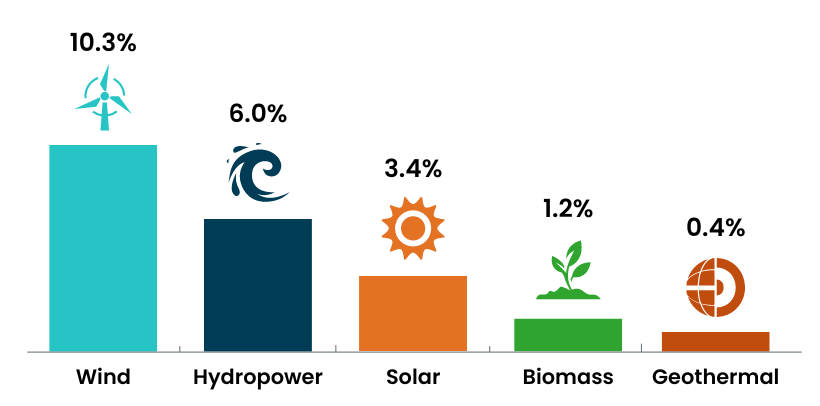Renewable energy offers numerous economic, environmental, and social advantages. These include:
Reduced carbon emissions and air pollution from energy production
Enhanced reliability, security, and resilience of the power grid
Job creation through the increased production and manufacturing of renewable energy technologies
Increased U.S. energy independence
Lower energy costs
Expanded energy access for remote, coastal, or isolated communities.
Learn more about the advantages of wind energy, solar energy, bioenergy, geothermal energy, hydropower, and marine energy, and how the U.S. Department of Energy is working to modernize the power grid and increase renewable energy production.
Renewable Energy in the United States
Renewable energy generates over 20% of all U.S. electricity, and that percentage continues to grow. The following graphic breaks down the shares of total electricity production in 2022 among the types of renewable power:

In 2022, annual U.S. renewable energy generation surpassed coal for the first time in history. By 2025, domestic solar energy generation is expected to increase by 75%, and wind by 11%.
The United States is a resource-rich country with enough renewable energy resources to generate more than 100 times the amount of electricity Americans use each year. Learn more about renewable energy potential in the United States.